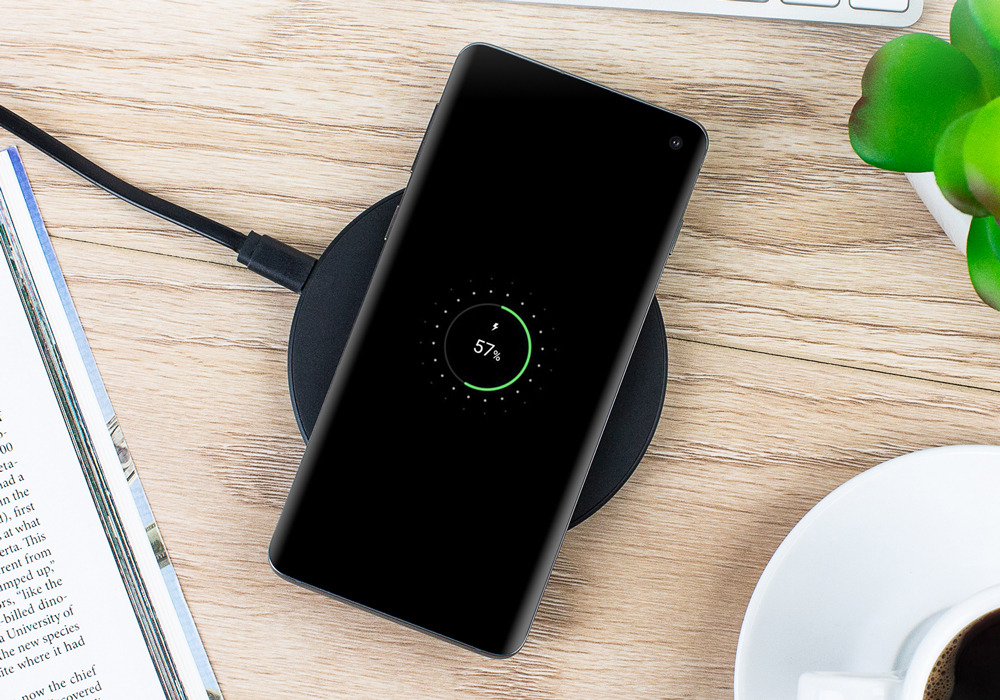I think we have all experienced being in the lecture room and seeing that your laptop or mobile phone only has 5% left… Whether the Erasmus University Rotterdam should install sockets in the lecture rooms is a topic for a different blog, but this problem could be solved once and for all by wireless charging from a distance.
Many companies, such as Apple and Samsung, have already adapted their products to wireless power transfer (WTP), relying on magnetic fields and their ability to influence your mobile device (Owen, 2021). With so many different competitors in the market, the technology is quickly developing and engineers are constantly looking for ways to make incremental changes to their product. However, users still have to think of charging their device and cannot use the product in the meantime. Hence, the reason why cables and chargers still exist to this day.
South-Korean investigators are taking a step further by investigating whether you can charge your devices from a wireless distance of 30 meters, making use of resonant beam charging (RBC) also known as infrared beams (Javed et al., 2022). Long-range wireless charging can make your life easier because you do not need to worry about your device’s battery charge, no need to search for an outlet space and no more laptops blacking out during your lecture (Boger, 2020). For now, the study mainly focuses on industrial practices, for example a device which is inaccessible or hard to wire.
While the technique seems promising, there are still several limitations and challenges to the investigation. According to Javed et al. (2022) the charging of a single mobile phone would take up to 140 hours. Even the regular wireless charging pads have a slower charging speed and this prevents consumers from throwing away their cables (Chen, 2018). Next to that, there could be several human health risks involved in the new technique. Infrared beams have low frequency and should not be hazardous for its consumers. The investigators are still pessimistic and use a so-called ‘safe low power delivery mode’ if an object or person interjects with the radiation (Business Insider Nederland, 2022).
Perhaps wireless charging from a distance still needs some improvements, but it could be plausible that the students from the future won’t even know what chargers are anymore. Can you imagine a lecture room with infrared beams charging the devices of all students? What do you think?
References:
Boger, Y. (2020, February 24). How long-range wireless power can change your office. IoT Agenda. Retrieved September 7, 2022, from https://www.techtarget.com/iotagenda/blog/IoT-Agenda/How-long-range-wireless-power-can-change-your-office
Business Insider Nederland. (2022, September 5). Draadloos opladen op 30 meter afstand: dankzij infraroodlicht gooien we alle oplaadkabels straks mogelijk de prullenbak in. Retrieved September 7, 2022, from https://www.businessinsider.nl/draadloos-opladen-infrarood-licht-laser-stroom/
Chen, B. X. (2018, October 3). Wireless Charging Is Here. So What Is It Good For? The New York Times. Retrieved September 7, 2022, from https://www.nytimes.com/2018/10/03/technology/personaltech/wireless-charging-pros-cons.html
Javed, N., Nguyen, N., Naqvi, S. F. A., & Ha, J. (2022). Long-range wireless optical power transfer system using an EDFA. Optics Express, 30(19), 33767–33779. https://doi.org/10.1364/OE.468766
Owen, M. (2021, January 1). Qi and Magsafe – Everything an iPhone user needs to know about wireless charging. AppleInsider. Retrieved September 7, 2022, from https://appleinsider.com/articles/21/01/01/qi-and-magsafe—everything-an-iphone-user-needs-to-know-about-wireless-charging


Very interesting topic! I did not hear about the research about developing wireless charges from a distance before reading your post, but I think it might be a very high potential technology. Especially, as you explained really well in your post, I think a lot of people don’t like the hassle of charging their phone, and a lot of times people experience the inconvenience of having a phone out of battery when being at work, at university, in the train, etcetera without being able to charge which means there is a real customer need for this innovation. Especially implementing such devices in lecture halls at university might be very useful when also being able to charge laptops during lectures. However, I think it is crucial for the developers to solve the problem of the long charging time, as when charging one single mobile phone takes 140 hours, implementing those devices in for example trains would not provide a lot of benefits. Also, I think, as you mention, research must proof no health risks are related to those charging devices especially since people are getting more and more focused on personal health over the last years. Overall, very nice post!
Interesting topic Deamy! I would be ideal to always have my phone charged. Are there any prospects on when this technology will significantly improve the charing time. Besides that, what is your view on the implementation of this technology in the consumer market? Who would buy this, and where will it be implemented?